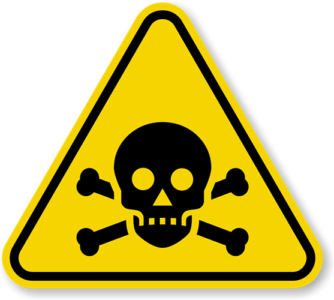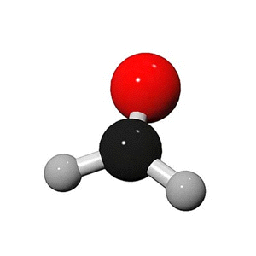Formaldehyde is a colourless, strong-smelling gas often found in aqueous (water- based) solutions. Commonly used as a preservative in medical laboratories and mortuaries, CH2O is also found in many products such as:
- chemicals
- particle board
- household products
- glues
- permanent press fabrics
- paper product coatings
- fibreboard
- plywood.
It is also widely used as an industrial fungicide, germicide and disinfectant. Additionally Ch2O is an important precursor to many other materials and chemical compounds. In 1996, the installed capacity for production was estimated to be 8.7 million tonnes per year.
Commercial solutions of CH2O in water, commonly called formal or formalin, were formerly used as disinfectants and for preservation of biological specimens. It is also used for the embalming of human remains. It is commonly used in nail hardeners and nail varnish. In view of its widespread use, toxicity and volatility, exposure to formaldehyde is a significant consideration for human health.
Health Risks of CH2O:
Formaldehyde is highly toxic to all animals, regardless of method of intake. Ingestion of 30 mL (1 oz.) of a solution containing 37% formaldehyde has been reported to cause death in an adult human. Water solution of formaldehyde is very corrosive and its ingestion can cause severe injury. Furthermore it is a sensitising agent that can cause an immune system response upon initial exposure. It is also a cancer hazard.
Acute exposure is highly irritating to the eyes, nose, and throat and can make anyone exposed cough and wheeze. Subsequent exposure may cause severe allergic reactions of the skin, eyes and respiratory tract. Ingestion of CH2O can be fatal, and long-term exposure to low levels in the air or on the skin can cause asthma-like respiratory problems and skin irritation such as dermatitis and itching. Concentrations of 100 ppm are immediately dangerous to life and health.
Workers can inhale formaldehyde as a gas or vapour or absorb it through the skin as a liquid. They can be exposed during the treatment of tex- tiles and the production of resins. In addition to healthcare professionals and medical lab technicians, groups at potentially high risk include mortuary workers as well as teachers and students who handle biological specimens preserved with formaldehyde or formalin.
In the residential environment, exposure comes from a number of different routes; formaldehyde can off-gas from wood products, such as plywood or particle board, but it is produced by paints, varnishes, floor finishes, and cigarette smoke. It can cause allergies although for most people, irritation is temporary and reversible.









